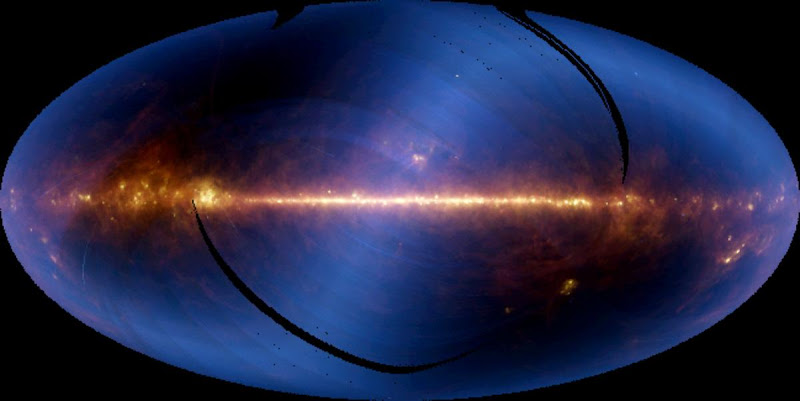
Nearly the entire sky, as seen in infrared wavelengths and projected at one-half degree resolution, is shown in this image, assembled from six months of data from the Infrared Astronomical Satellite, or IRAS. The bright horizontal band is the plane of our Milky Way galaxy, with the center of the galaxy located at the center of the picture. (Because of its proximity, the Milky Way dominates our view of the entire sky, as seen in this image. IRAS data processed to show smaller regions of the sky, however, reveal thousands of sources beyond the Milky Way.) The colors represent infrared emission detected in three of the telescope's four wavelength bands (blue is 12 microns; green is 60 microns, and red is 100 microns). Hotter material appears blue or white while the cooler material appears red. The hazy, horizontal S-shaped feature that crosses the image is faint heat emitted by dust in the plane of the solar system. Celestial objects visible in the photo are regions of star formation in the constellation Ophiucus (directly above the galactic center) and Orion (the two brightest spots below the plane, far right). The Large Magellanic Cloud is the relatively isolated spot located below the plane, right of center. Black stripes are regions of the sky that were not scanned by the telescope in its first six months of operation. Image Credit: NASA/JPL-Caltech

















